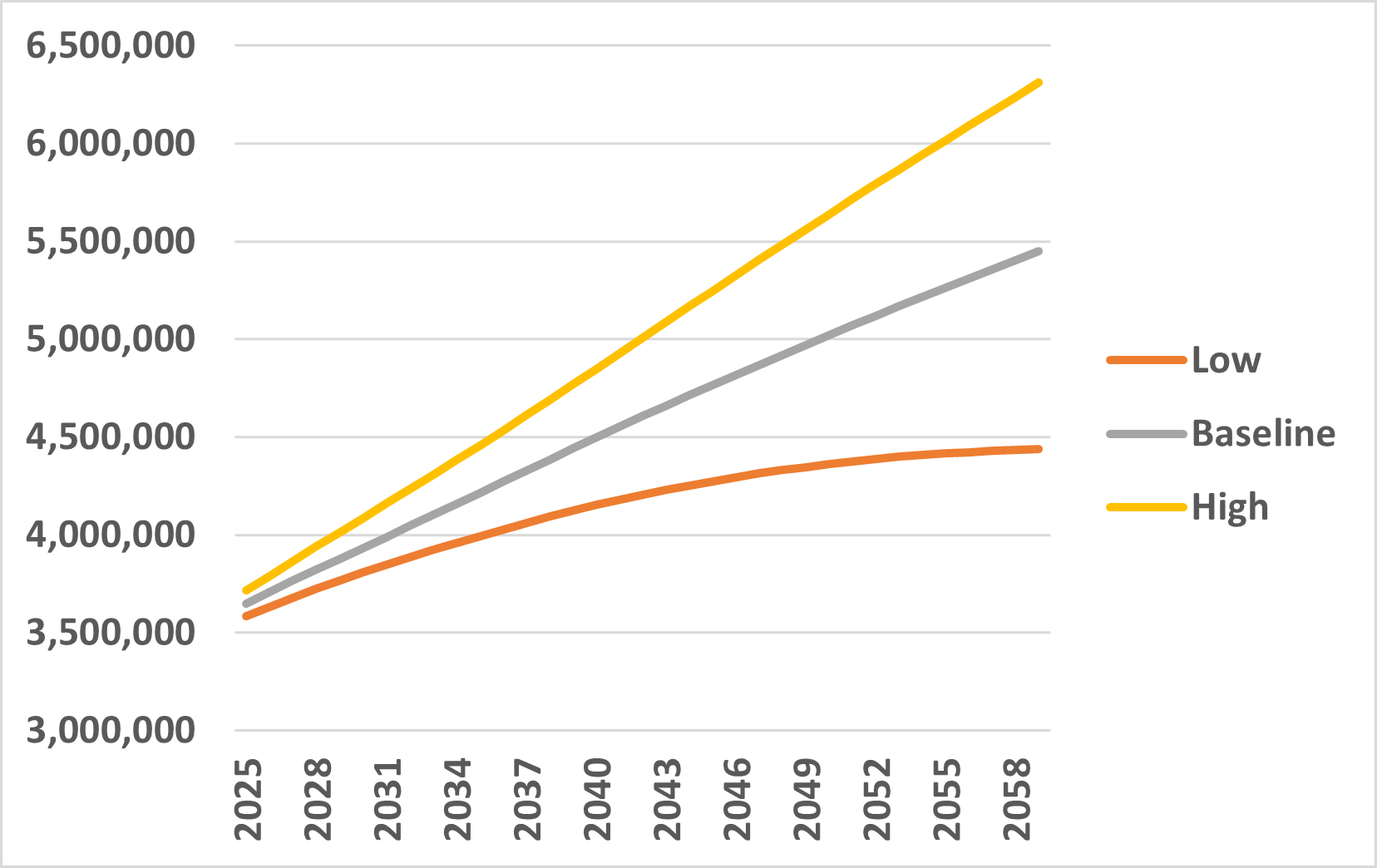Blog Post
Insight: High and Low Projection Scenarios for Utah and its Counties
By: Mike Hollingshaus
Aug 9, 2022 – The Kem C. Gardner Policy Institute created a new low- and high-growth scenario product for the state and all 29 counties for the first time. This information supplements the regularly-produced baseline long-term planning projections with alternative plausible futures for the state and counties. The figure highlights the range for the total population statewide, with the low scenario coming in at 4.4 million residents in 2060 and the high at 6.3 million. The baseline projection is 5.5 million residents.
Figure 1: State of Utah Total Resident Population by Scenario
Source: Kem C. Gardner Policy Institute
We still consider our baseline projections scenario (published earlier this year) to be Utah’s most likely future. However, despite all the work, resources, and community feedback that went into those projections, we cannot know the future with certainty. Every Utahn actively creates that future, and nobody can predict such a complex network of individual and institutional choices. Random happenings such as natural disasters, extraordinary medical advances, or another potential baby boom could also play a role.
We expect many policymaking organizations will find these high and low scenarios helpful when planning for extreme contingencies. While there is no guarantee the actual numbers will fall within these high and low boundaries, we deem them to be reasonable given the history, data, and research regarding fertility rates, life expectancy, and employment. Our Data User Guide provides additional details. Hopefully, these projection scenarios will improve your ability to make informed decisions.
The accompanying data can also be accessed here.
Mike Hollingshaus is a senior demographer at the Kem C. Gardner Policy Institute.







